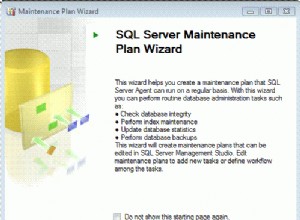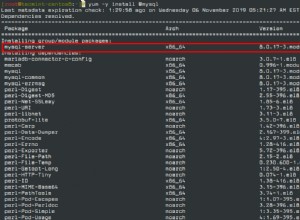Usar um cursor requer algum código clichê padrão para cercá-lo.
Usar um cursor para chamar um procedimento armazenado para cada conjunto de valores da tabela requer essencialmente o mesmo clichê. Você
SELECT os valores que você deseja passar, de onde quer que você os obtenha (que pode ser uma tabela temporária, tabela base ou exibição, e pode incluir chamadas para funções armazenadas) e, em seguida, chame o procedimento com esses valores. Eu escrevi um exemplo sintaticamente válido desse código clichê, abaixo, com comentários para explicar o que cada componente está fazendo. Há poucas coisas que eu não gosto mais do que ser solicitado a fazer algo "só porque" - então tudo é (espero) explicado.
Você mencionou chamar o procedimento com vários valores, então este exemplo usa 2.
Observe que os eventos que acontecem com ela estão em uma ordem específica por um motivo. As variáveis devem ser declaradas primeiro, os cursores devem ser declarados antes de seus manipuladores continue e os loops devem seguir todas essas coisas. Isso dá a impressão de que há uma inflexibilidade bastante extrema aqui, mas esse não é realmente o caso. Você pode redefinir a ordenação aninhando código adicional dentro de
BEGIN ... END bloqueios dentro do corpo do procedimento; por exemplo, se você precisasse de um segundo cursor dentro do loop, bastaria declará-lo dentro do loop, dentro de outro BEGIN ... END . DELIMITER $$
DROP PROCEDURE IF EXISTS `my_proc` $$
CREATE PROCEDURE `my_proc`(arg1 INT) -- 1 input argument; you might not need one
BEGIN
-- from http://stackoverflow.com/questions/35858541/call-a-stored-procedure-from-the-declare-statement-when-using-cursors-in-mysql
-- declare the program variables where we'll hold the values we're sending into the procedure;
-- declare as many of them as there are input arguments to the second procedure,
-- with appropriate data types.
DECLARE val1 INT DEFAULT NULL;
DECLARE val2 INT DEFAULT NULL;
-- we need a boolean variable to tell us when the cursor is out of data
DECLARE done TINYINT DEFAULT FALSE;
-- declare a cursor to select the desired columns from the desired source table1
-- the input argument (which you might or might not need) is used in this example for row selection
DECLARE cursor1 -- cursor1 is an arbitrary label, an identifier for the cursor
CURSOR FOR
SELECT t1.c1,
t1.c2
FROM table1 t1
WHERE c3 = arg1;
-- this fancy spacing is of course not required; all of this could go on the same line.
-- a cursor that runs out of data throws an exception; we need to catch this.
-- when the NOT FOUND condition fires, "done" -- which defaults to FALSE -- will be set to true,
-- and since this is a CONTINUE handler, execution continues with the next statement.
DECLARE CONTINUE HANDLER FOR NOT FOUND SET done = TRUE;
-- open the cursor
OPEN cursor1;
my_loop: -- loops have to have an arbitrary label; it's used to leave the loop
LOOP
-- read the values from the next row that is available in the cursor
FETCH NEXT FROM cursor1 INTO val1, val2;
IF done THEN -- this will be true when we are out of rows to read, so we go to the statement after END LOOP.
LEAVE my_loop;
ELSE -- val1 and val2 will be the next values from c1 and c2 in table t1,
-- so now we call the procedure with them for this "row"
CALL the_other_procedure(val1,val2);
-- maybe do more stuff here
END IF;
END LOOP;
-- execution continues here when LEAVE my_loop is encountered;
-- you might have more things you want to do here
END $$
DELIMITER ;




